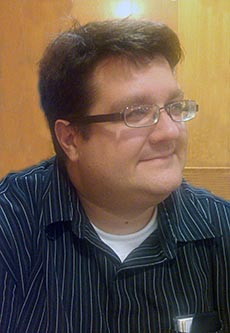Science in a Vacuum Serves No One
Interview with IdeaConnection problem solver and facilitator Tony Contento By Paul Arnold
Tony Contento was one of a small band of IdeaConnection problems solvers who worked on a series of humanitarian challenges to alleviate problems caused by arsenic poisoning in Bangladesh. He had wanted to work on common good challenges ever since he first signed up to IdeaConnection. When the chance arose during a collaboration with Chemists Without Borders, he jumped at it. In this interview he talks about his team’s novel idea for an arsenic removal water filter and his motivations for taking part.
 You get into science to answer questions of course, but science is also about community, it’s about helping other scientists and helping other people improve their lives and the world around us. I tell my students all the time that science in a vacuum serves no one. You have to be able to share what you’ve learned and share your analysis with people in order to make science worthwhile.
You get into science to answer questions of course, but science is also about community, it’s about helping other scientists and helping other people improve their lives and the world around us. I tell my students all the time that science in a vacuum serves no one. You have to be able to share what you’ve learned and share your analysis with people in order to make science worthwhile. How did your team come up with a winning solution?
It was good old fashioned book research and research of the literature. The thing is, if you look there are answers to a lot of these questions out there. They are either in old patents or in old papers that people have set down for one reason or another. Perhaps the reason was because the technology wasn’t available 20 years ago that needed to make this thing really inexpensive or maybe there really wasn’t a specific need – and now there is.
The methods that we suggested for the water filtration system, don’t really utilize brand new state of the art technology. But I think the cost has come down so much in recent years that now this technology is able to be utilized.
So, you don’t always have to reinvent the wheel, you can re-purpose it?
Yes. I am of the opinion that there are plenty of answers to your questions already available from most situations. Someone has already either described something or even invented something that is just off patent or was not designed for your purpose. There has been so much technological advance even over the past 20 years that we kind of lose perspective of what was invented over the past 50 years or even the past 100 years.
There are ideas out there that people have used for decades that they put down in favour of something cheaper or they have forgotten how to do the old things. So before you decide to engineer something new, look at the old technology and see if and how you can re-purpose it.
Just because a solution isn’t current let’s say, that doesn’t mean it’s no good.
Exactly. There are things that years and years ago weren’t practical. Perhaps something as simple as the processing power didn’t exist in a form that you needed. But now microprocessor technology might allow you do incredible things you couldn’t do 20 years ago.
Can you briefly describe your solution for the arsenic removal water filter challenge?
With this one we took PT plastic and it was coated with an amino acid called cysteine. We picked up on this technology from another researcher.
We saw they were in the preliminary stages of their research, so nothing on a large scale, but they had expressed interest to move into the large scale. There are several amino acids capable of binding amino acids, cysteine being one of them and we basically put the two together. We looked for the patents and then tracked down the actual researcher. So we didn’t actually come up with a prototype, but the technology was available. There was a researcher working with it and we just put them and the seeker together.
